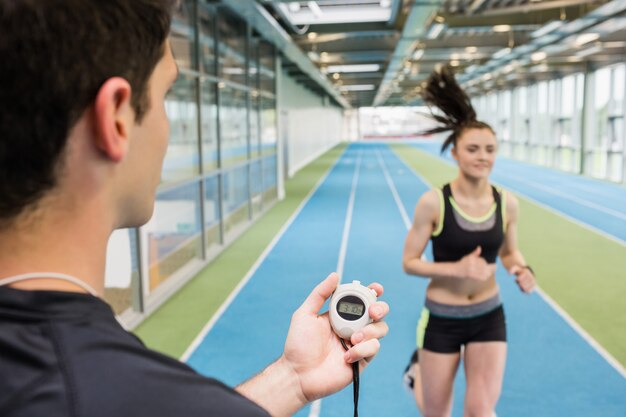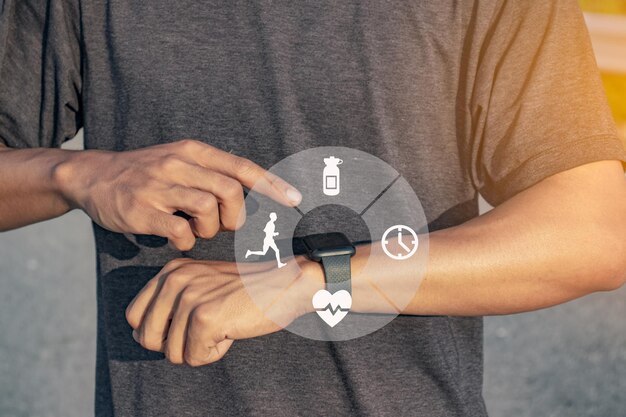When it comes to fitness trackers, many people often find themselves debating between Whoop vs Garmin. Both of these devices have loyal followings, and each brings something unique to the table. In this article, we’ll break down the differences, pros, and cons of Whoop and Garmin to help you make an informed choice for your fitness journey.
If you’re looking for a wearable that tracks your health 24/7 and offers deep insights into your body’s recovery, strain, and sleep, you might be leaning toward Whoop. But if you’re someone who prefers a more traditional fitness watch with a screen, GPS capabilities, and more advanced activity tracking, then Garmin could be your perfect fit. Let’s dive into a detailed comparison of Whoop vs Garmin and see which one stands out for different types of users.
Whoop vs Garmin: The Ultimate Showdown of Fitness Trackers

When choosing a fitness tracker, the Whoop vs Garmin debate comes up often. These two brands offer unique features, and depending on your needs, one might work better for you than the other. Whoop focuses mainly on tracking recovery and strain, offering personalized insights. On the other hand, Garmin is known for its all-in-one approach, giving users detailed metrics for everything from running to strength training.
The main difference comes down to what you need most from a tracker. If you want to focus on fitness and recovery, Whoop is a solid choice. However, if you want a tracker that does everything – including GPS, on-screen stats, and a variety of sports tracking – Garmin might be the better fit. This section will help you decide which is better for you by comparing the main features of each device.
What Makes Whoop and Garmin Different? A Detailed Breakdown
The Whoop vs Garmin comparison goes deeper than just a few basic features. Garmin is known for its wide variety of models, including watches like the Forerunner and Fenix series. These are perfect for athletes who need multiple metrics, including heart rate, GPS tracking, and step counts. Garmin watches also offer longer battery life, making them ideal for long runs or outdoor activities.
Whoop, on the other hand, is a subscription-based service that tracks your strain, recovery, and sleep but doesn’t come with a screen. This makes it lightweight and ideal for athletes who focus on performance but don’t want distractions during their workouts. However, without a screen, you won’t be able to track your stats during a workout unless paired with a phone. The key difference here is that Garmin offers more real-time data, while Whoop provides deeper insights after the fact.
Whoop vs Garmin: Which One Offers the Best Value for Money?
When deciding between Whoop vs Garmin, price plays a major role. Whoop charges a monthly subscription fee, which means you’re paying for the service, not just the tracker. This might add up quickly, but the detailed recovery and strain data are beneficial for some users. In the long run, if you’re committed to improving your fitness with precise metrics, Whoop can be worth the investment.
Garmin’s models usually come with a higher upfront cost but don’t require a monthly subscription. You pay for the watch once and get access to all its features without any ongoing fees. Depending on your budget and what you want from a tracker, Garmin could be the more cost-effective option in the long term. It offers great value for people who want a high-quality tracker with advanced features without paying extra for data insights.
Accuracy Comparison: How Whoop and Garmin Stack Up Against Each Other
When it comes to accuracy, the Whoop vs Garmin debate can get a little tricky. Both brands are known for their reliability, but they shine in different areas. Garmin’s heart rate monitoring and GPS capabilities are top-notch. Whether you’re running, cycling, or swimming, Garmin offers accurate tracking of pace, distance, and calories burned. It’s a great choice for people who want precise real-time data.
On the other hand, Whoop is better suited for tracking recovery. Its heart rate variability (HRV) measurement helps you understand your body’s recovery state after a workout. It also tracks sleep more precisely, offering insights into deep sleep and recovery periods. While Whoop might not be as accurate as Garmin for activities like running or biking, it excels when it comes to understanding your body’s overall fitness and recovery.
User Experience: Wearing Whoop vs Garmin on a Daily Basis
The Whoop vs Garmin debate extends to daily comfort and ease of use. Whoop is designed as a lightweight band that can be worn all day and night. It doesn’t have a screen, which might be a plus for those who don’t want to be distracted. It’s also very comfortable, which makes it ideal for wearing during sleep or while doing intense workouts. The downside is that you’ll need to check your stats on your phone or computer.
Garmin, however, offers a wide range of devices with screens, so you can quickly see your stats during workouts. These watches are a bit bulkier but often come with more advanced features like built-in GPS, touchscreen controls, and different workout modes. If you prefer having a screen to glance at during your workout, Garmin may be the better option for you. It’s important to consider how much you mind wearing a bigger device on your wrist.
Battery Life: Whoop vs Garmin—Which Tracker Lasts Longer?
Battery life is another key factor when comparing Whoop vs Garmin. While both trackers are designed to last for long periods, the specific models you choose can make a difference.
- Garmin: Depending on the model, Garmin watches can last anywhere from 7 days to several weeks on a single charge. The Forerunner series, for example, offers excellent battery life for long-distance athletes.
- Whoop: Whoop typically lasts around 5 days, and you need to recharge it regularly. However, since it doesn’t have a screen, the power consumption is quite low compared to some smartwatches.
If battery life is a priority for you, Garmin’s watches have the edge for longer-lasting power, especially if you’re going on long hikes or outdoor adventures.
Whoop vs Garmin for Recovery and Strain Tracking: Which is Better?
When it comes to tracking recovery and strain, Whoop is designed to provide the most detailed insights. Its algorithm tracks your physical exertion over time and compares it to your recovery levels. This helps you optimize your workouts and prevent overtraining. Whoop’s sleep tracking is also highly rated, giving users a full breakdown of their sleep quality.
Garmin, while not as focused on recovery, does provide useful data related to fitness strain and overall heart rate. Its body battery feature estimates your energy levels throughout the day, though it’s not as detailed as Whoop’s recovery insights. If recovery tracking is your main concern, Whoop might be the best option. But if you need a more balanced approach with added features like GPS and daily fitness tracking, Garmin could be the better choice.
Garmin vs Whoop: Which One Fits Better for Strength Training?

Strength training enthusiasts might find Garmin a better fit than Whoop due to its specialized workout modes. Garmin watches offer strength training apps that track sets, reps, and even suggest rest times. It also provides detailed heart rate data during weightlifting, which can help you monitor how hard you’re working.
While Whoop tracks heart rate and strain, it doesn’t have specific modes for strength training. This means it might not give you the detailed feedback you’d expect when lifting heavy weights. However, Whoop does give a general recovery and strain score, which could help you track how much recovery time you need before hitting the weights again. If you’re serious about strength training, Garmin’s detailed workout modes will give you more useful data.
How to Integrate Whoop and Garmin Data Into Your Fitness Routine

Integrating Whoop vs Garmin data can be tricky, but it’s possible. Both trackers can sync with apps like Strava and Apple Health, making it easy to see your activity data in one place. Garmin’s ecosystem is more robust, with deeper integrations with apps and devices. If you use a Garmin watch, you can track everything in Garmin Connect, which is a comprehensive fitness app that gives you a clear overview of your progress.
Whoop, on the other hand, focuses heavily on recovery and performance data, and you’ll need to use the Whoop app to access these insights. You can sync Whoop data to Strava, but it doesn’t have as many integration options as Garmin. Combining both devices can help you track your fitness performance from every angle, so you can tailor your workouts and recovery accordingly.
Conclusion:
Choosing between Whoop vs Garmin really depends on your fitness goals. If you’re focused on recovery, sleep tracking, and understanding how much strain your body can handle, Whoop might be the better choice for you. It’s perfect for athletes who want to dive deep into their recovery and avoid overtraining. The subscription fee might seem like a lot, but the insights you get can be very helpful in improving your fitness.
However, if you need a tracker that does it all—like GPS, activity tracking, and heart rate monitoring—then Garmin is the way to go. It’s great for people who enjoy outdoor activities or need a device that gives you real-time data during workouts. Both devices have their strengths, so think about what features matter most to you and how you want to use the tracker in your daily life.




